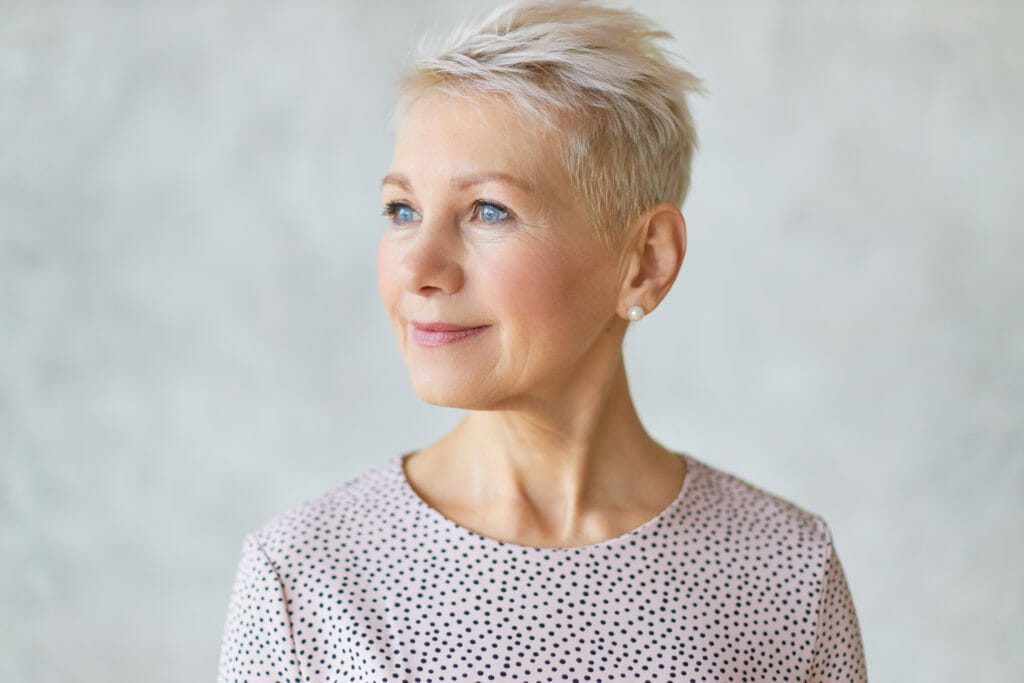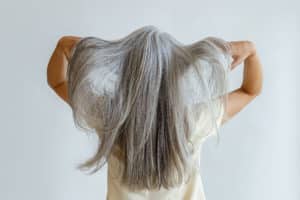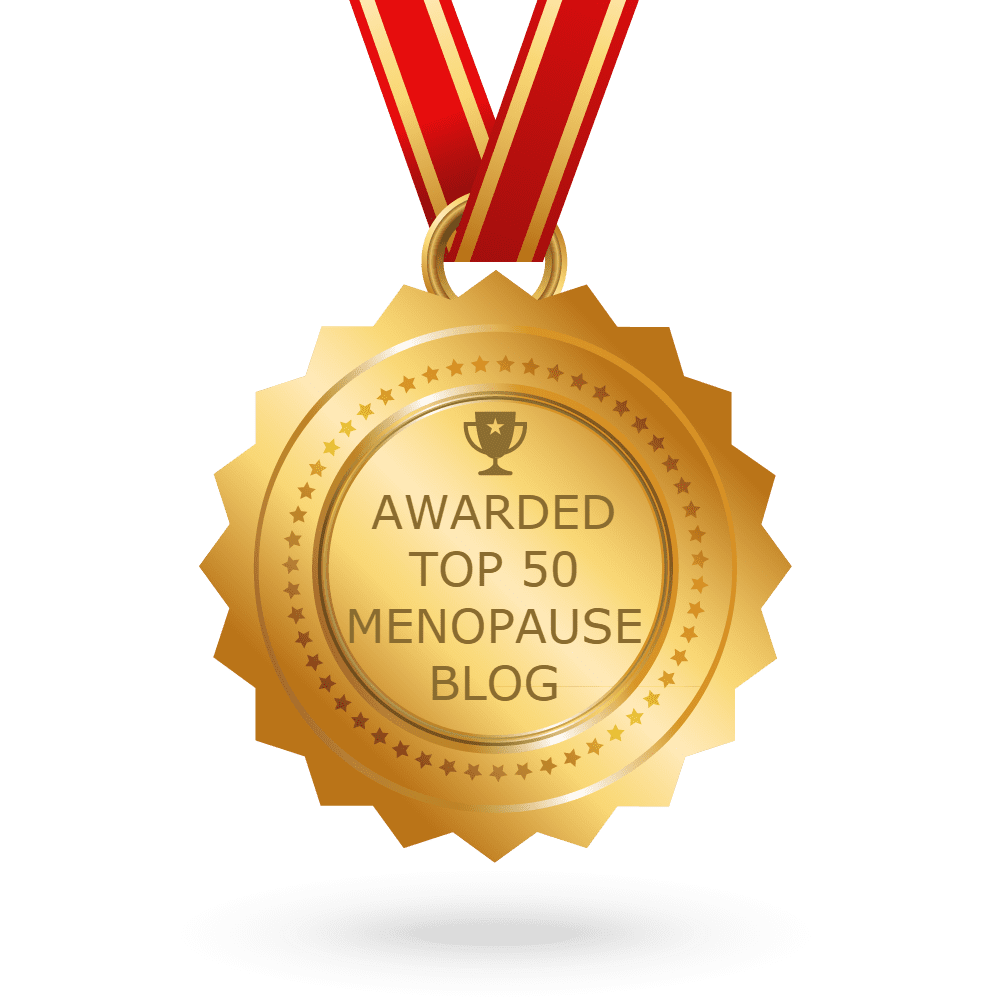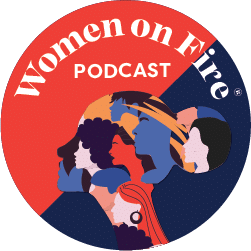- Hair loss.
It can be one of the frustrating and emotional parts of the menopause journey. Even if your hair isn’t shedding by the handful, you might notice it’s lost that lustrous, glossy volume you loved.
We’re totally understand how distressing that feels – and there’s a reason your hair is often called your crowning glory.
You’re Not Alone (And Neither Am I)
Personally, I’ve always had fine hair and dreamed of a voluminous mane. But as the years go by, it’s getting finer – and I’ve noticed my parting growing wider too. (Not uncommon, by the way.) In some cases, gulp, bald patches can also occur.
That’s why I was thrilled when LotsaLocks® arrived on the scene. She’s my new BFF – my can’t-live-without-daily support. And if you’re nodding along, she might become yours, too.
Why Does Hair Thin During Menopause?
1. Hormonal changes
Like so many perimenopause / menopause signs and symptoms, changes in hair texture and quantity often stem from hormonal imbalances. It’s not just declining estrogen – there’s a complex dance involving:
- Thyroid hormones
- Testosterone and androgen ratios
- Cortisol (hello, stress)
- Insulin resistance
- And, yes even too much estrogen
👉 That’s exactly why we created Merry Perry® and Perky Post®. They’re formulated to support hormonal balance naturally through thi ever-changing life stage.
2. Nutritional deficiencies
Your body needs micronutrient magic to support healthy follicles. Hair is non-essential from a survival standpoint, so if your body’s running low on key nutrients, it deprioritises growth.
Look to support the following:
- iron, zinc, magnesium and vitamin D
- all of the B vitamins especially biotin (B7), B6 and B12,
- essential fatty acids (EFAs)
- silica (great for strength and shine 😊)
Your body needs micronutrient magic to support healthy follicles. Hair is non-essential from a survival standpoint, so if your body’s running low on key nutrients, it deprioritises growth.
Look to top-up the following:
Iron, Zinc, Magnesium, and Vitamin D
Biotin (B7), B6, and B12
Essential Fatty Acids (EFAs)
Silica (great for strength and shine)
While that miracle shampoo might help on the surface, these nutrients work from the inside out. (Still, we love a good natural shampoo boost, too!)
Environmental + lifestyle factors
We live in a toxic soup – think endocrine disruptors in personal care products, household cleaners, and even the air. These can mess with your hormones and sabotage your strands.
Add in overexercising, undersleeping, and stress from work or family, and it’s a follicular disaster waiting to happen.
Stress, in particular, can hijack your hormone balance and shut down non-essential functions like hair growth.
Related: Trichologist Chelcey Salinger Unravels Midlife Hair Loss & Thinning
What Can You Do About Menopause Hair Loss?
1. Get your thyroid tested
Thyroid issues often show up around perimenopause, but many tests only look at TSH, not the full picture. A comprehensive panel includes T3 and T4, which can directly affect your hair growth cycle.
Hair grows in a four phases:
- Anagen (growth)
- Catagen (transition)
- Telogen (rest)
- Exogen (shed)
When thyroid hormones are not optimal, it can turn these phases on or off. A functional medicine practitioner can help you get clarity here.
2. Love your liver, gut, and blood sugar
Hormones don’t exist in a vaccum. Your liver is responsible for detoxing excess hormones, your gut helps regulate nutrient absorption, and your blood sugar impacts insulin – all of which impacts hair health.
. When the liver isn’t healthy hormones can’t circulate and convert well. Consequently, any excess can’t be flushed out causing them to build up in our system.
Hormones disruptions like:
- Estrogen dominance
- High cortisol
- Insulin resistance
- Non-optimal nutrient absorption
…can lead to follicle miniaturisation and increased hair shedding.
That’s why recommend Happy Go Tummy®, Merry Perry® and Perky Post® – your go-to’s for gut-loving and smoother hormone function.
3. Tame your stress
In menopause, estrogen production shifts from your ovaries to your adrenal glands. That means chronic stress = elevated cortisol = more hair loss.
Mindfulness, breathwork, yoga, and even just slowing down aren’t woo-woo, they’re non-negotiable tools for midlife women.
Read the science behind stress and mindfulness here..

Some excellent supplements that may help:
Biotin (vitamin B7)
Contributes to the production of the protein found in hair, skin, and nails – keratin. It’s a water-soluble vitamin which means the body doesn’t store it. It can be found naturally in egg yolks, cheese, leafy greens, mushrooms, nuts. It’s also in LotsaLocks®!
Iron
Iron deficiency is one of the most common causes of hair loss, and as it’s an essential nutrient you must get it from food. Foods such as shellfish, spinach (as Popeye made famous!), legumes, broccoli, tofu, red meat and dark chocolate all boost iron. Red Seal’s Floradix Floravital is an excellent (and tasty) liquid iron supplement you can find at the supermarket.
Tip: If you’re experiencing heavy bleeding in peri, get your iron levels checked.
Zinc
An essential mineral to hormone health, a lack of zinc has been associated with hair loss. It’s also key to many bodily processes and immunity. A simple saliva test at your local health store will let you know if you’re deficient. If you can’t get one there ask your GP. Zinc foods include nuts, seeds, eggs, meat, shellfish. Also pumpkin seeds and oysters are well-known zinc providers!
Silica
One of my hairdressers – a top celeb artisan in Sydney – recommends taking liquid silica to boost hair growth and volume. He suggests not getting a formula mixed with other ingredients, look for pure silica. Silica is a trace mineral and is also extremely good for bone and teeth health – something else 40+ women also need to focus on. Food sources include whole grains, oats, leafy greens, asparagus, cucumber, melons and green beans. Another bonus? Silica is helpful for skin elasticity and collagen (plumping) formation.
EFA’s (essential fatty acids)
EFA’s have been associated with hair loss.
It’s essential to get the right balance of omega-3 and omega-6 fatty acids with the recommendation being 4:1. Most people on the standard supermarket diet ingest too much omega-6 which has been linked with high blood pressure and blood clots as well as weight gain (study).
How to avoid this?
Omega-6 fats mainly come from vegetable oils like safflower and sunflower. They have heart and cholesterol benefits and – most importantly for us – hormone-balancing properties. To get the balance right it’s a good idea to use omega-6 moderately and emphasise omega-3 rich foods. These include oily fish, fish oil, walnuts, flaxseeds (and flaxseed oil). Tip:
On the subject of hair? Get enough EFA’s and your hair texture and strength should improve.
A word about autoimmune disease & hair
Autoimmune conditions such as Alopecia, Hashimoto’s thyroiditis and Grave’s disease can contribute to hair loss. Getting your liver, blood sugar and gut health on track may help.
The Bottom Line
Hair loss in menopause is common – but not something you just have to live with. By addressing your hormones, nutrients, stress, and lifestyle, you can take back control and bring bounce, growth, and confidence back to your beautiful crown.
And if you’re looking for support, try:
LotsaLocks® – for daily follicle support
Merry Peri® – to help smooth perimenopause hormonal chaos
Perky Post® – for post-menopausal balance
Happy Go Tummy® – because it all starts with your gut
But the true star of the hair show is….
LotsaLocks® with keraGEN-IV® and Biotin
We created LotsaLocks® to support thick, healthy hair from the inside out. It uses keraGEN-IV® which is an ethically sourced keratin protein and biotin.®










